Industrial PLC solution based on ST STM32MP257FAK3 MP2 controller
Programmable logic controller (PLC) is a digital computing operating electronic system specifically designed for use in industrial environments. It uses a programmable memory to store instructions for performing operations such as logical operations, sequence control, timing, counting and arithmetic operations, and controls various types of mechanical equipment or production through digital or analog input and output. process.
Programmable Logic Controller (PLC), a digital computing controller with a microprocessor for automated control, can load control instructions into memory at any time for storage and execution. The programmable controller is composed of functional units such as CPU, instruction and data memory, input/output interface, power supply, and digital-to-analog conversion. The early programmable logic controllers only had the function of logic control, so they were named programmable logic controllers. Later, with the continuous development, these computer modules with simple functions at the beginning have included logic control, timing control, simulation control, For various functions such as multi-machine communication, the name was also changed to Programmable Controller. However, because its abbreviation PC conflicts with the abbreviation of Personal Computer, and due to habit, people still often use Programmable Controller. The term Programmable Logic Controller is still used and the abbreviation PLC is still used.
This style of PLC solution is based on the ST main control chip: STM32MP257FAK3 design, ultra-high main frequency, with multi-interface EtherCAT, coupled with the ST chip localization strategy.
ST STM32MP257 main control core resources
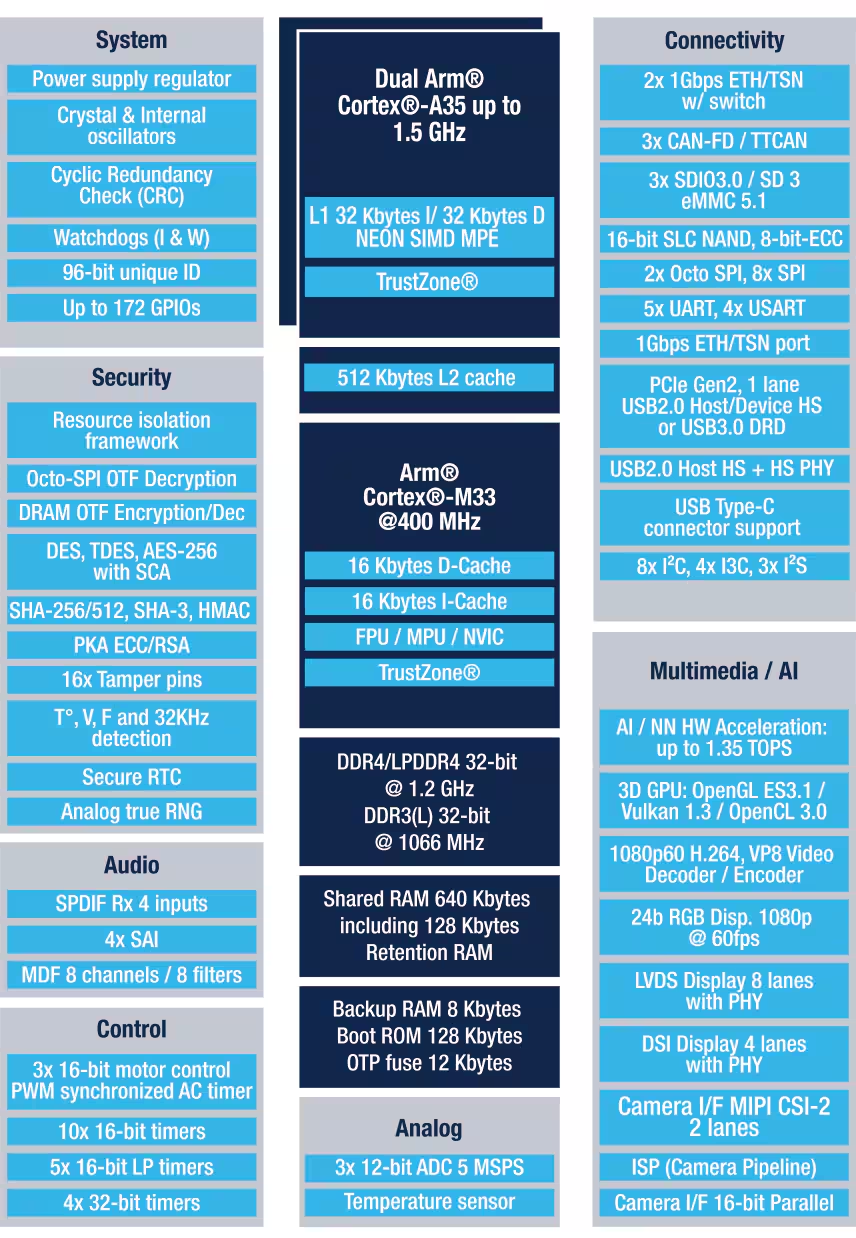
Development board photos
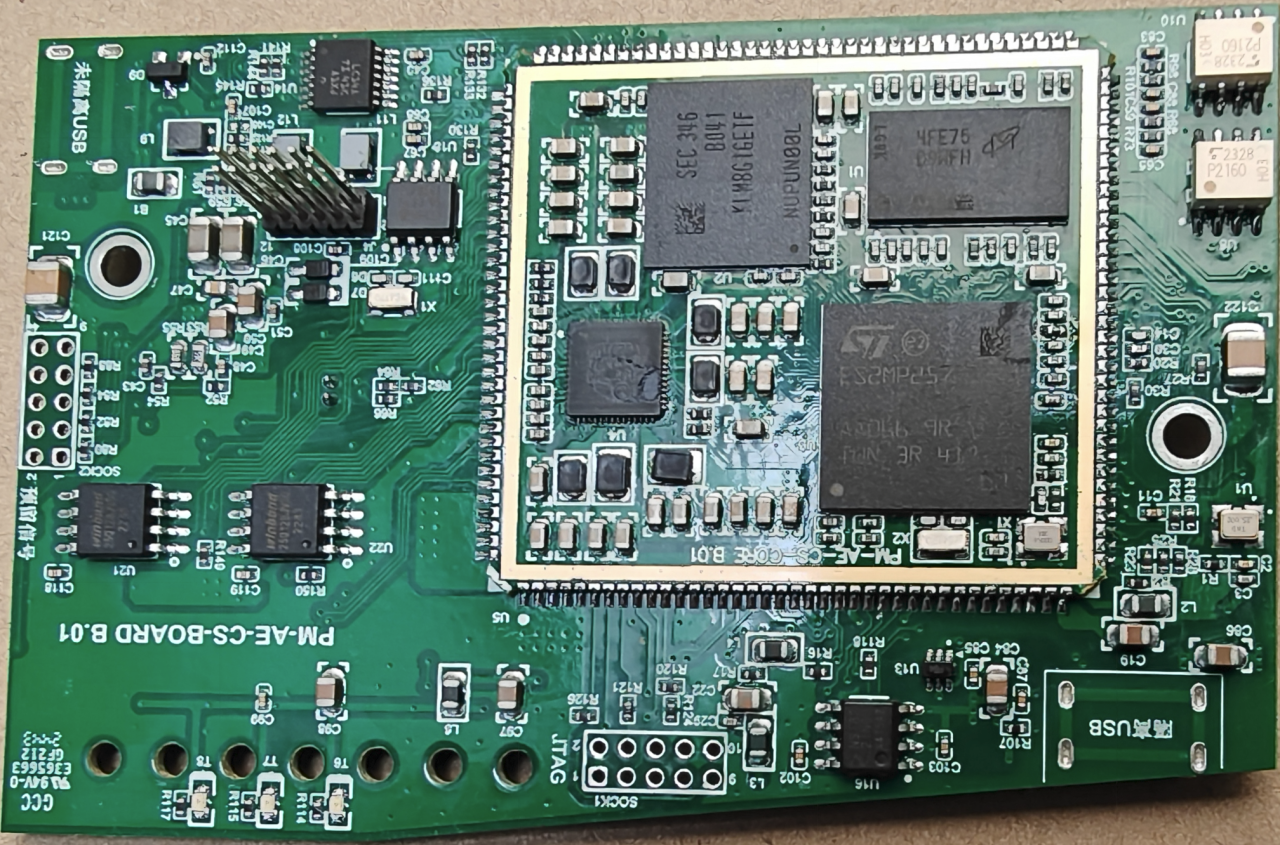
Scenario application diagram
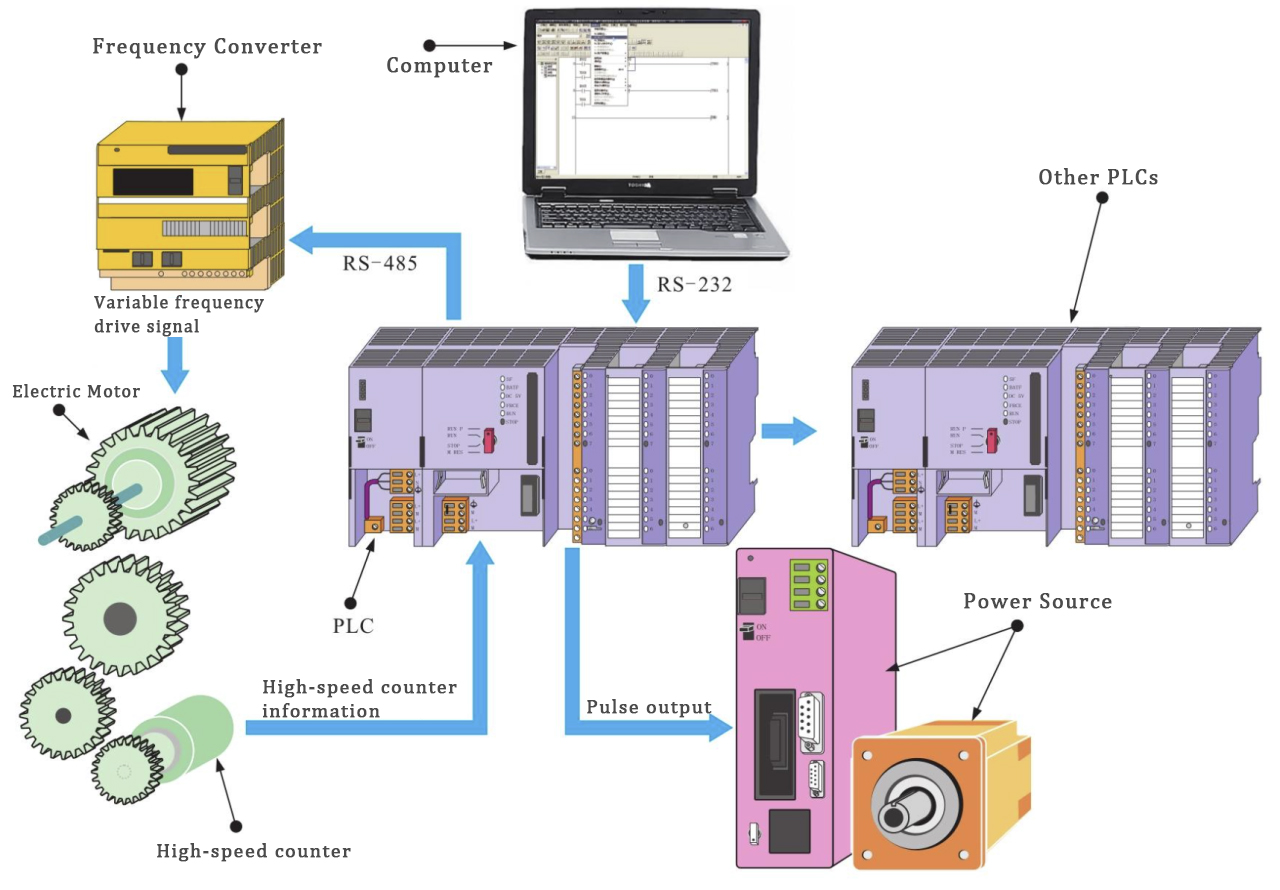
Product entity diagram
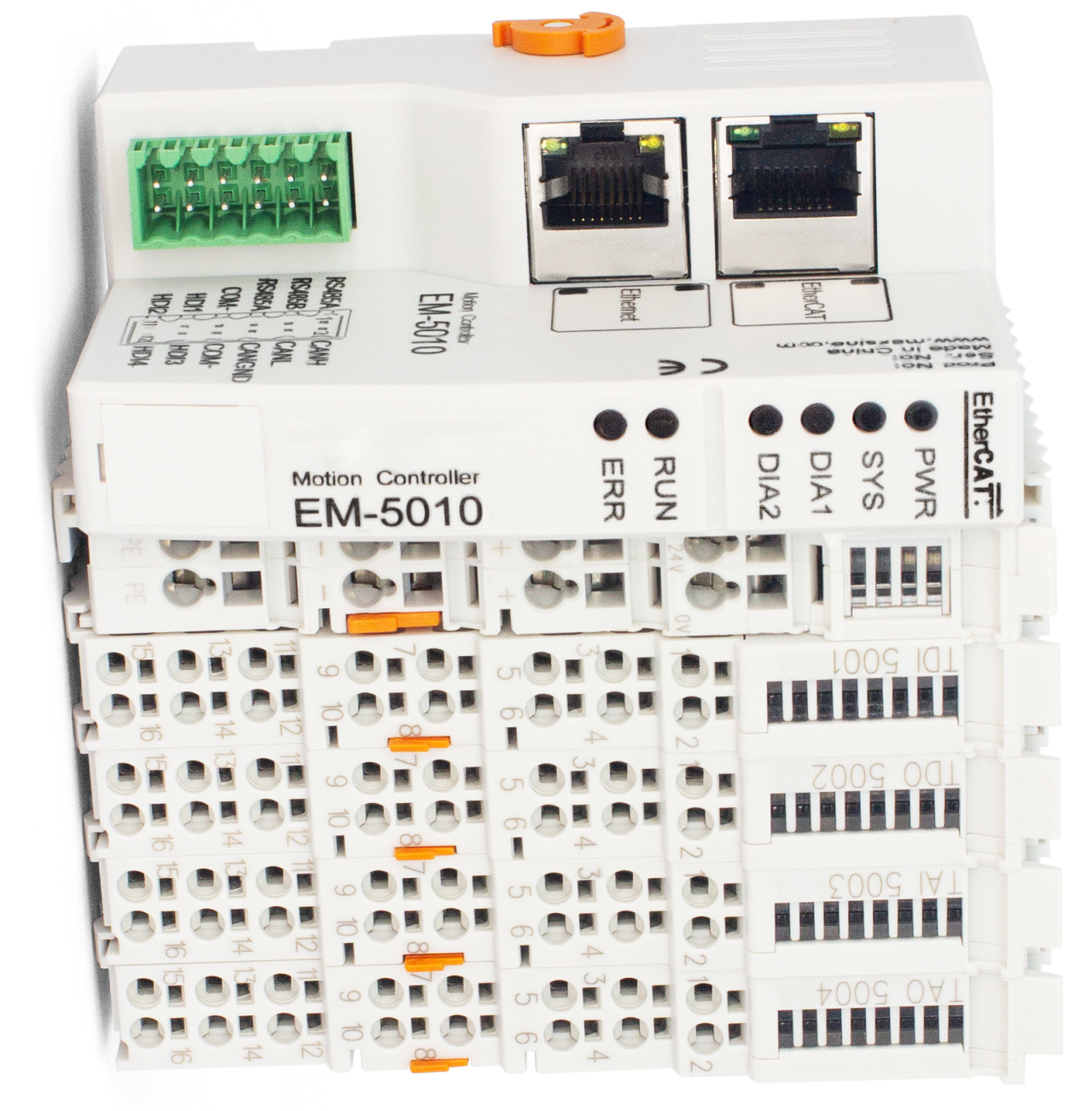
Scheme diagram
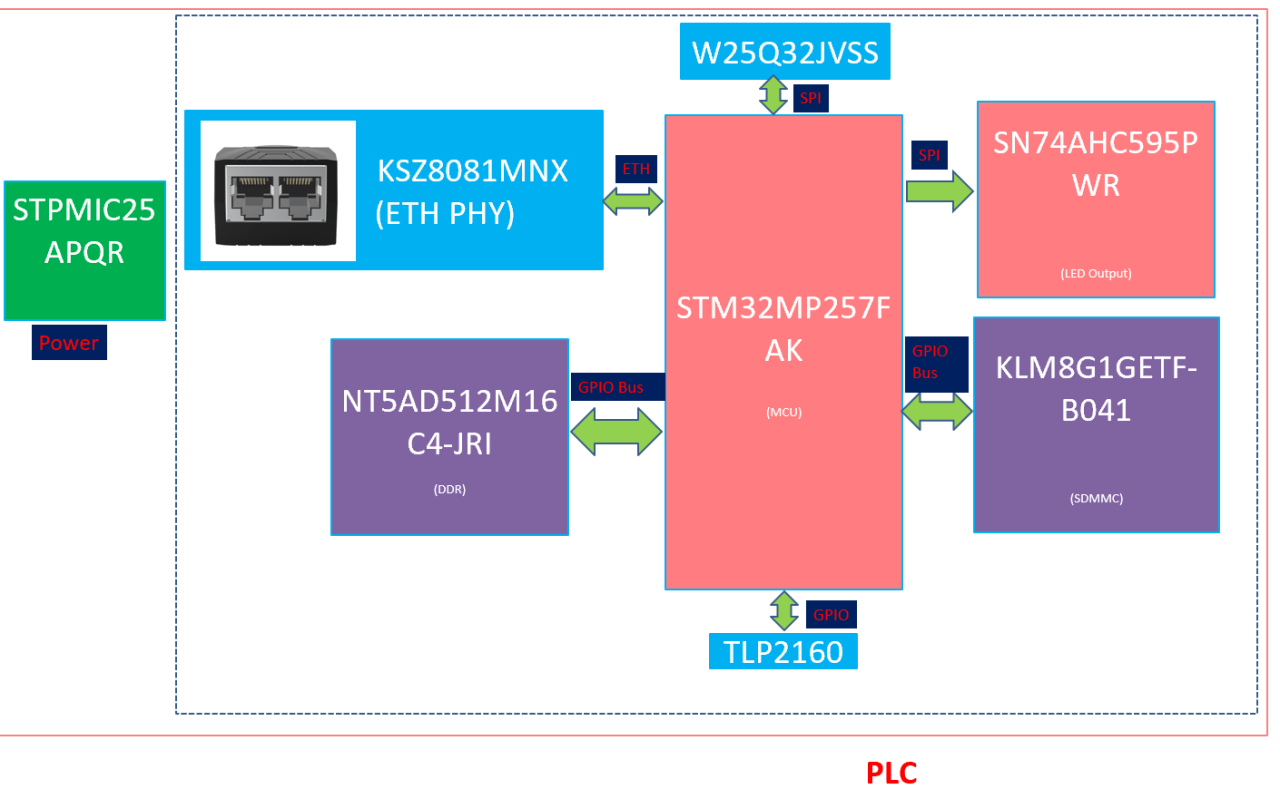
Core technology
1.STM32MP257F MPU with Dual Arm Cortex-A35 @1.5GHz, Cortex-M33 @400MHz, 3xEthernet (2+1 switch), 3xFD-CAN, LVDS/DSI, H.264, 3D GPU, AI/NN, Secure Boot, Cryptography, DRAM enc/dec, PKA
2.Two Gigabit Ethernet Interface, with TSN support (optional), one Gigabit Ethernet Switch connected to ETH1 and providing two external PHY interfaces, with TSN support (optional)
3.Two Octo-SPI flash memory interface, with on-the-fly content decryption
4.Security/safety Secure boot, TrustZone® peripherals, active tamper, environmental monitors, display secure layers, hardware accelerators Complete resource isolation framework
AES-128, -192, -256, DES/TDES Secure AES-256 with SCA RSA, ECC, ECDSA with SCA HASH (SHA-1, SHA-224, SHA-256, SHA3), HMAC
5.Up to 172 secure I/O ports with interrupt capability
6.Artificial intelligence:Optional NPU: VeriSilicon® - Up to 900 MHz, TensorFlowLite - ONNX - Linux NN
7.Up to 34 timers and 7 watchdogs
Solution specifications
1. Voltage: 24V power supply
2.EtherCAT, Modbus, CANopen
3.EtherCAT: Synchronization cycle 2ms/32 axes
4.16 input/8 output switching interface
5.4 input/4 output analog port
6.4 high-speed inputs
7.Supports six programming languages
8. Supports cascading expansion and convenience
9. Internet-friendly and convenient networking
10.Support multiple communication methods
11.Wide range of applications
12. Programming friendly, easy to complete advanced applications
The programmable logic controller used in industry is equivalent to or close to the host of a compact computer. Its advantages in scalability and reliability make it widely used in various industrial control fields. Whether in a computer direct control system, a centralized distributed control system DCS, or a field bus control system FCS, there are always a large number of various types of PLC controllers used. There are many PLC manufacturers, such as Siemens, Schneider, Mitsubishi, Delta, etc. Almost all manufacturers involved in the field of industrial automation will provide PLC products.
